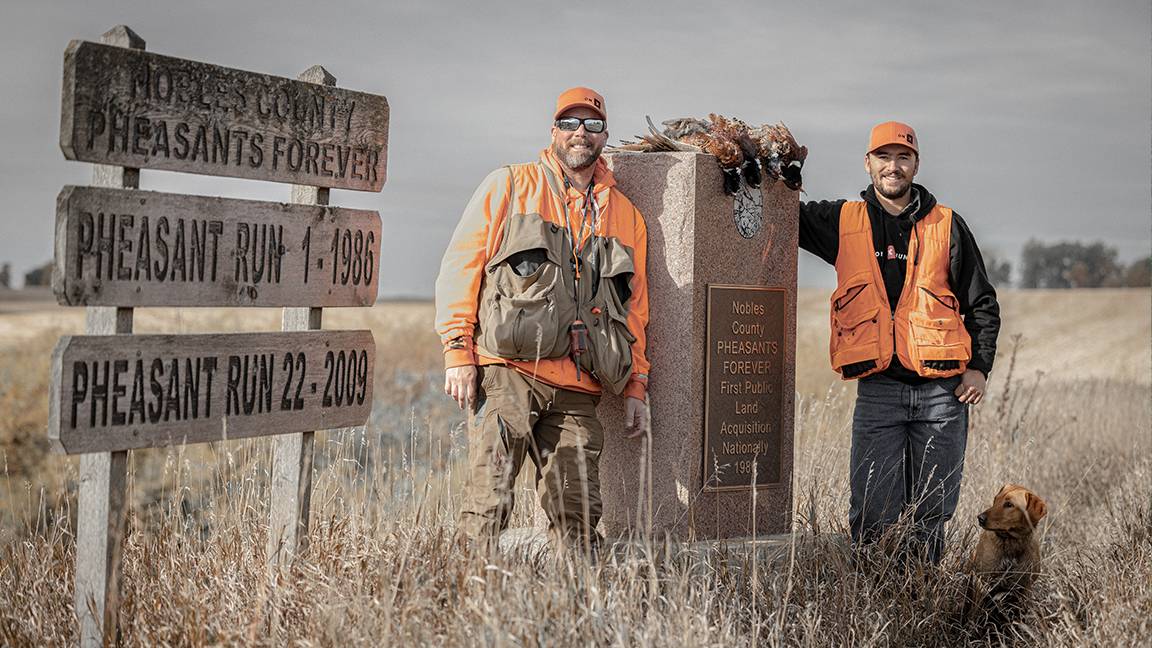GRANITE FALLS, Minn. — Pioneer PBS’s Prairie Sportsman will feature pheasant hunting at Worthington Wellhead and homeowners planting pollinator-friendly yards on its upcoming episode. “Pheasant and Pollinators” will air on Sunday, February 5 at 7:30 p.m. on Pioneer PBS.
“Well Protected” features a pheasant hunt near Worthington with Host Bret Amundson on the first land to ever be acquired by a Pheasants Forever chapter. While Nobles County is known for its abundance of pheasants, it lacks water. Over the past century, officials near Worthington have searched extensively for water sources and have found only one. They’ve gone to great lengths to protect the Worthington Wellhead, primarily through habitat restoration. Tall grass prairie filters water and provides shelter for wildlife.
The next segment, “Yards for the Bees,” highlights homeowners’ efforts to help bees, birds and butterflies thrive. In 2019, the endangered rusty patched bumblebee became the official Minnesota state bee and drew attention to pollinators in decline. Homeowners like Dana Boyle of Woodbury are concerned that beneficial bugs need more habitat to thrive, so she turned her neatly manicured turf grass lawn into a “bug hotel.” Boyle learned about the state’s new Lawns to Legumes program when she volunteered at Blue Thumb’s booth at the Minnesota State Fair. Funded by the Minnesota Environment and Natural Resources Trust Fund, the Lawns to Legumes program was launched in 2019 with three main components: $350 cost-share grants to help residents with native plantings, large demonstration neighborhood grants of up to $40,000 and online education to help anyone design pollinator-friendly yards.
Finally in “Fast Forage,” Nicole Zempel shows viewers how to sustainably harvest wild prairie onions, a threatened native plant with a unique onion smell and green stems. Wild prairie onions grow in rocky areas and prairies, and they produce pinkish-purple flowers in late July to August. The small bulbs are edible and have a strong onion flavor.
People in Pioneer PBS’s viewing area can livestream this episode at www.pioneer.org/live on February 5 at 7:30 p.m. “Pheasant and Pollinators” will be repeated on Monday, February 6 at 12:30 p.m. and will be available for online viewing at www.pioneer.org/prairiesportsman and on Prairie Sportsman’s YouTube page at www.youtube.com/@PrairieSportsman.
About Prairie Sportsman
Produced by Pioneer PBS, Prairie Sportsman is an Emmy-awarded series that celebrates love of the outdoors by featuring topics on hunting, fishing and recreation, while promoting environmental stewardship. Prairie Sportsman’s team is Dylan Curfman, producer, videographer and editor; Bret Amundson, host and editor; Cindy Dorn, writer and producer; and Dan Amundson, videographer and editor. The 2023 season is made possible by funding from the Environment and Natural Resources Trust Fund, Shalom Hill Farm, Live Wide Open, Western Minnesota Prairie Waters and members of Pioneer PBS.
About Pioneer PBS
Pioneer PBS is an award-winning, viewer-supported television station, dedicated to sharing local stories of the region with the world. For more information visit: www.pioneer.org.



